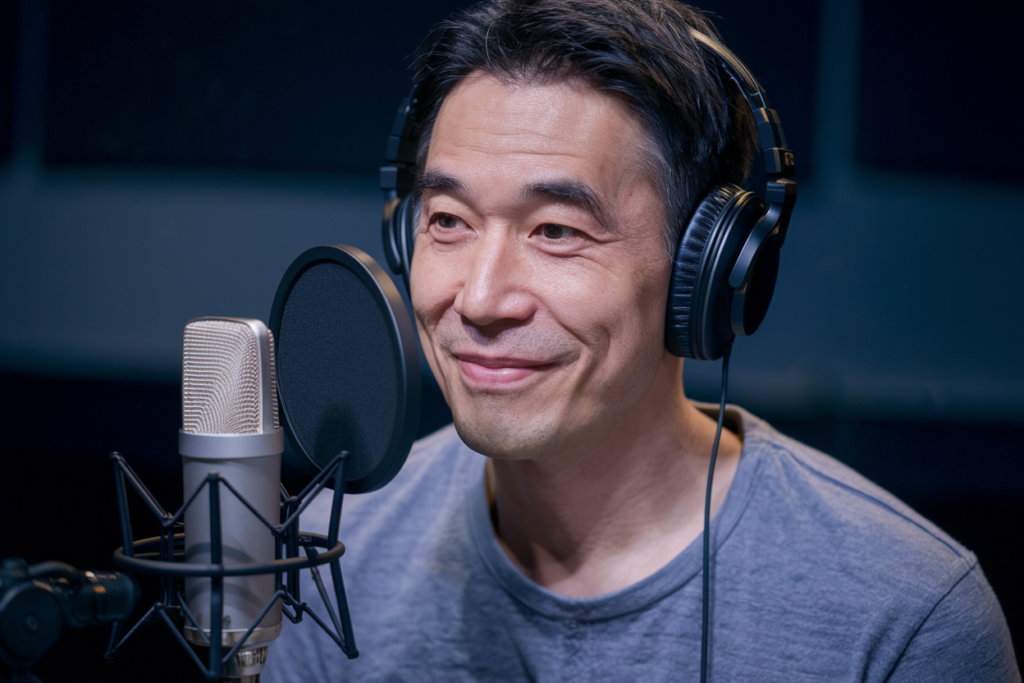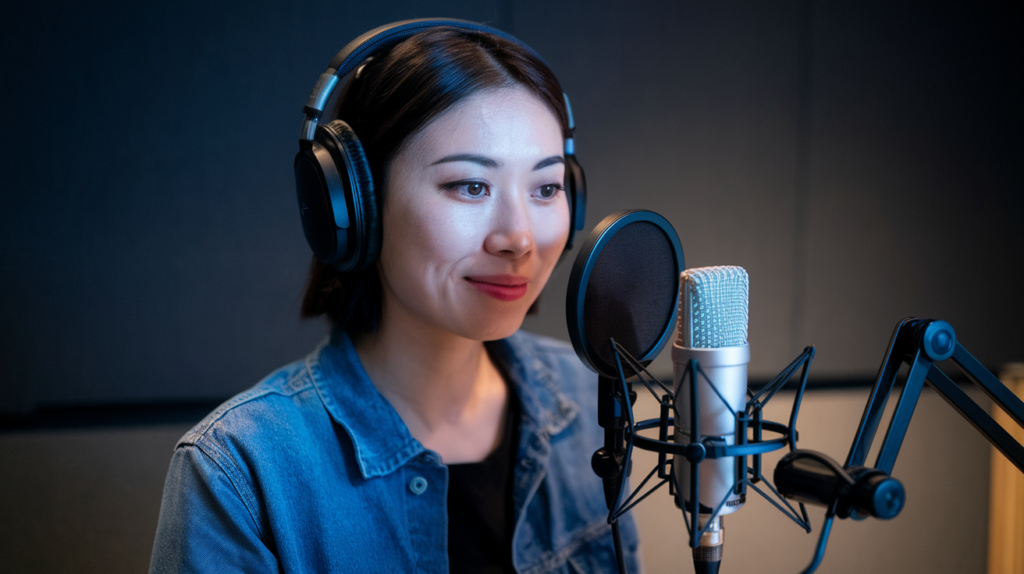Key Takeaways
- Importance of Cultural Context: Crafting Japanese subtitles requires an understanding of cultural nuances to ensure that humor, idioms, and emotions translate effectively for diverse audiences.
- Manual Translation vs. Automated Tools: While automated subtitle generation can save time, manual translation by skilled professionals ensures accuracy and emotional depth in the subtitles.
- Timing and Synchronization: Proper timing is crucial; subtitles should appear 1 second before dialogue and remain on-screen long enough (1-6 seconds) for easy reading without confusion.
- Font and Style Selection: Choose sans-serif fonts with appropriate sizing (22-30 points) and contrasting colors to enhance readability while avoiding distracting effects like shadows.
- Hybrid Approaches for Efficiency: Combining automated tools with manual editing creates a balanced workflow that maintains quality while speeding up the subtitle creation process.
- Engagement Through Clarity: Effective subtitling enhances viewer engagement by ensuring clarity in communication, allowing audiences to fully immerse themselves in the content.
Ever wondered how to create the best Japanese subtitles that truly resonate with your audience? Whether you’re a filmmaker, educator, or content creator, getting subtitles right can make all the difference in conveying meaning and emotion.
Overview of Japanese Subtitles
Japanese subtitles play a crucial role in bridging language barriers and enhancing viewer engagement. They provide context, emotion, and clarity to the dialogue, allowing audiences to fully immerse themselves in the content. A well-executed subtitle not only translates words but also conveys cultural nuances, making it essential for filmmakers and content creators.
Creating effective Japanese subtitles involves understanding both the source material and the target audience. It’s important to maintain the original tone while ensuring that every line flows smoothly on screen. This includes selecting appropriate font styles, sizes, and colors that enhance readability without distracting from the visuals.
Timing is another critical factor when crafting subtitles. They must sync perfectly with spoken dialogue to ensure that viewers can follow along seamlessly. If there’s a mismatch between audio and text, it can lead to confusion or frustration for your audience.
Consideration of reading speed also plays a vital role in subtitle creation. Typically, limit each subtitle to two lines with no more than 35 characters per line. This approach allows viewers enough time to read without missing key parts of the scene.
Incorporating voiceover elements can further enrich your project. By using skilled voice actors who understand cultural subtleties, you can complement your subtitles with engaging narration or character voices that resonate with audiences.
Ultimately, embracing these methods ensures that your Japanese subtitles enhance storytelling while effectively reaching diverse viewers across various platforms.
Importance of Accurate Subtitles
Accurate subtitles play a critical role in delivering your content effectively. They ensure that viewers grasp the nuances and emotions embedded in dialogues, enhancing their overall experience.
Cultural Context
Understanding cultural context is vital for creating compelling Japanese subtitles. Each language reflects its culture, which means certain phrases or idioms may not translate directly. For example, humor often relies on cultural references that might confuse non-native speakers. You can bridge cultural gaps by adapting these elements while preserving the original intent. This approach creates a more relatable viewing experience and helps maintain audience engagement.
Linguistic Challenges
Linguistic challenges also arise when crafting accurate subtitles. Japanese syntax differs significantly from English; thus, direct translations often result in awkward phrasing or loss of meaning. Consider employing concise language while ensuring clarity to avoid misunderstandings. Additionally, timing plays an essential role; syncing subtitles with spoken dialogue maintains viewer immersion and comprehension.
Incorporating voiceovers into your projects adds another layer of richness to storytelling. A skilled voice actor brings characters to life, supporting the subtitle narrative by providing emotional depth and context through tone and delivery. Combining accurate subtitling with high-quality voice talent ensures your message resonates with diverse audiences across platforms.
Best Methods for Japanese Subtitles
Creating effective Japanese subtitles involves a combination of techniques that ensure clarity, accuracy, and engagement. Here are some methods to consider.
Automated Subtitle Generation
Automated subtitle generation tools can offer quick solutions for creating Japanese subtitles. These tools use algorithms to transcribe audio and generate text but often struggle with context and nuances. While they provide a good starting point, editing is crucial to refine the output. You might find inaccuracies in translations or missed emotions in the dialogue due to cultural differences. Therefore, always review automated subtitles before using them.
Manual Translation Techniques
Manual translation remains one of the best methods for quality assurance when crafting Japanese subtitles. Skilled translators understand both languages deeply and can capture subtle meanings and emotional tones effectively. They adapt phrases that don’t translate directly, ensuring your message resonates with viewers. Additionally, manual translation allows you to select appropriate font styles and sizes while timing each line perfectly with the spoken dialogue. This hands-on approach enhances readability and viewer experience significantly.
Hybrid Approaches
Hybrid approaches combine automated tools with manual expertise for an efficient yet accurate subtitle creation process. Start by generating initial drafts using automated software, then have a professional translator refine them. This method saves time while maintaining high standards of quality. By blending technology with human insight, you ensure that your content communicates effectively across cultural boundaries.
Considering these methods helps enhance storytelling through well-crafted Japanese subtitles, ultimately engaging diverse audiences more profoundly.
Tools and Software for Subtitle Creation
Creating Japanese subtitles requires effective tools and software to streamline the process. These resources can help you generate, edit, and finalize your subtitles efficiently.
Popular Subtitle Editors
Popular subtitle editors include:
- Aegisub: A free, open-source tool ideal for creating complex subtitles with advanced styling and timing options.
- Subtitle Edit: This user-friendly software supports over 200 subtitle formats, making it easy to synchronize text with audio.
- Amara: An online platform that allows collaboration on subtitling projects in real-time, perfect for team efforts.
- Kapwing: A versatile video editor that includes a subtitle generator; it’s great for quick edits without extensive technical knowledge.
These editors offer features like spell check, format conversion, and customizable styles to enhance readability.
Translation Services
Translation services play a crucial role in producing accurate Japanese subtitles. Consider these options:
- Professional Translators: Skilled translators ensure nuances and cultural context remain intact while adapting content appropriately. They capture emotions effectively for an authentic viewing experience.
- Machine Translation Tools: While fast and cost-effective, machine translations may lack emotional depth or cultural sensitivity. Always review these outputs carefully to maintain quality.
Utilizing a combination of professional translation alongside automated tools provides a balanced approach. This hybrid method ensures efficiency while preserving the essence of your message.
By leveraging the right tools and services, you can create compelling Japanese subtitles that resonate with viewers across diverse platforms.
Tips for Effective Subtitling
Creating effective Japanese subtitles involves careful attention to details that enhance viewer understanding. Good subtitles increase engagement and ensure the emotional tone of the content resonates with your audience.
Timing and Synchronization
Timing and synchronization are crucial for seamless subtitle integration. Subtitles must align perfectly with spoken dialogue to maintain clarity. Aim for a 1-second lead time before spoken words appear, allowing viewers to anticipate dialogue. Keep each subtitle on-screen long enough—approximately 1-6 seconds—to give viewers ample time to read before it disappears. Tight synchronization prevents confusion and enhances the overall viewing experience.
Font and Style Considerations
Font choice significantly impacts readability in subtitles. Opt for sans-serif fonts like Arial or Helvetica, as these styles are easier to read on various screen sizes. Ensure font size is large enough—generally between 22-30 points—so all viewers can easily read them without straining their eyes. Use contrasting colors against backgrounds for enhanced visibility; white text on a dark background works well in most cases.
Maintain simplicity by limiting effects like shadows or outlines, which can distract from the text itself. Two lines per subtitle is ideal, keeping each line under 35 characters whenever possible to accommodate reading speeds effectively.
With these tips, you can create engaging Japanese subtitles that maintain the original intent while enhancing viewer connection with your content.
Conclusion
Creating impactful Japanese subtitles is crucial for effective communication and audience engagement. By applying the best methods discussed, you can ensure your subtitles not only convey the original message but also resonate with viewers on a deeper level. Focus on clarity timing and cultural context to enhance readability and emotional connection.
Utilizing the right tools and techniques will streamline your subtitling process while maintaining quality. Whether you choose automated solutions manual translation or a hybrid approach remember that well-crafted subtitles can significantly elevate your content’s impact. Embrace these strategies to create engaging Japanese subtitles that truly reflect the essence of your storytelling.
Frequently Asked Questions
Why are Japanese subtitles important for filmmakers and educators?
Creating effective Japanese subtitles is crucial as they bridge language barriers, enhancing communication of meaning and emotion. Well-crafted subtitles allow viewers to connect more deeply with the content, improving engagement and overall experience.
What are key considerations for creating effective Japanese subtitles?
Important considerations include maintaining the original tone, selecting readable font styles and sizes, ensuring proper timing to sync with dialogue, and limiting each subtitle to two lines with no more than 35 characters per line for easy reading.
How can cultural context affect subtitle translation?
Cultural context plays a significant role in subtitle translation because certain phrases or idioms may not translate directly. Adapting these elements while preserving original intent creates a relatable viewing experience that resonates better with the audience.
What methods can be used to create Japanese subtitles?
Effective methods include automated subtitle generation for quick solutions, manual translation techniques for quality assurance, and hybrid approaches that combine both methods to ensure accuracy while saving time during the creation process.
Which tools are recommended for creating Japanese subtitles?
Recommended tools include Aegisub, Subtitle Edit, Amara, and Kapwing. These software programs streamline the subtitling process and enhance readability by offering features tailored specifically for subtitle creation.
What tips should be followed for timing and synchronization of subtitles?
To ensure good timing and synchronization, it’s advised to give a 1-second lead time before dialogue appears on-screen. Subtitles should remain visible for 1-6 seconds to accommodate viewers’ reading speed without causing confusion.
What font styles work best for Japanese subtitles?
Sans-serif fonts like Arial or Helvetica are preferred due to their readability. A font size between 22-30 points along with high-contrast colors enhances visibility against varying backgrounds in video content.
How do voiceovers enhance projects featuring Japanese subtitles?
Incorporating voiceover elements adds emotional depth through engaging narration or character voices. This enriches storytelling by providing additional context that complements the visual content alongside the written subtitles.







